Your Guide To Adding Sources Of Vitamin C And Folic Acid In Your Diet
While all vitamins are important for the body, vitamin C and B vitamins, particularly folic acid, also known as vitamin B9, are beneficial for growth and overall health. Vitamin C and B vitamins are the only water-soluble vitamins, the rest being fat soluble vitamins. It’s best to consume these nutrients naturally, so read on to know more about them and the source of vitamin C and folic.
Benefits of Vitamin C and Folic Acid

Both vitamin C and folic acid should be a part of our daily diet to avoid health complications. Dermatologist Dr Meeta Desai says, “Vitamin C is vital for the body as it helps in the formation of collagen, iron absorption, proper function of the immune system, wound healing and maintenance of cartilage, bones and teeth.” Also known as ascorbic acid, vitamin C acts as an antioxidant and protects the body against free radicals. “Folic acid is required for multiplication and maturity of red blood cells and to make DNA and other genetic material. Folic acid should be consumed especially during pregnancy as it helps in the formation of the neural tubes and can help prevent major birth defects,” adds Dr. Desai.
Common Sources Of Vitamin C And Folic
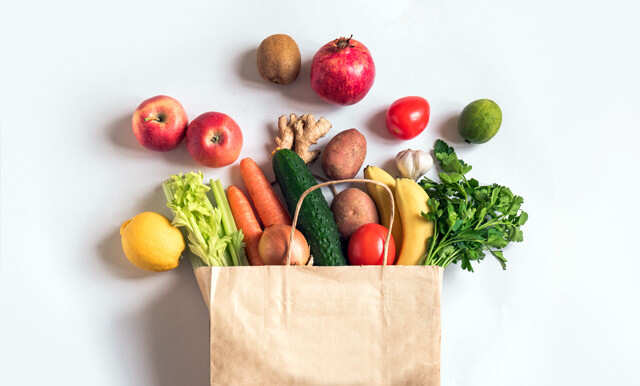
Image:
The human body cannot produce or store vitamin C, hence it is essential to consume this nutrient regularly in sufficient amounts.
Citrus fruits are a good source of vitamin C and folic. Here are some other sources of Vitamin C:
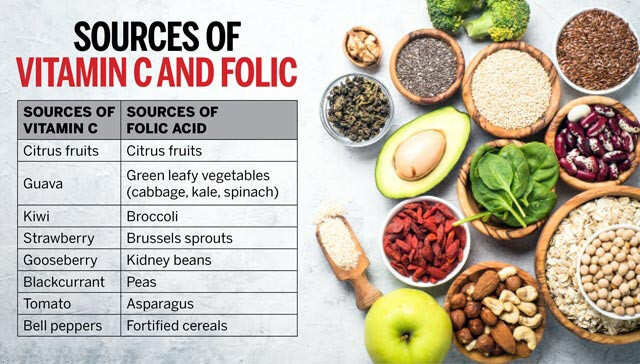
- Chilies
Chilies are easily available and can be inculcated in our diets in a creative, innovative way. Be it green or red chilies, both are rich in vitamin C. One green chili contains 109 mg of vitamin C and one red chili contains 65 mg of vitamin C.
- Guavas
Who doesn’t love this pink-fleshed tropical fruit? Activate your taste buds while gaining a good amount of vitamin C in your diet, a single guava contains 126 mg of vitamin C.
- Thyme
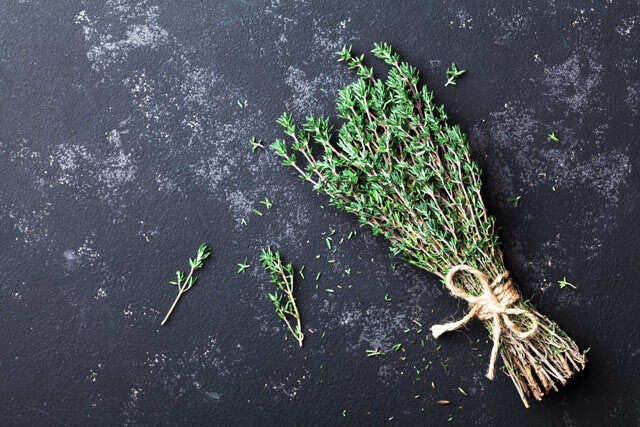
Image:
Did you know that fresh thyme has three times more vitamin C than oranges? When it comes to culinary herbs, thyme has one of the highest vitamin C concentrations. Just sprinkling one to two tablespoons of fresh thyme over your meal adds 3.5–7 mg of vitamin C to your diet!
- Lemons
Mix lemon juice with warm water and drink it first thing in the morning, or sip on lemonade on a hot summer day. There are various ways you can include lemons in your diet. One whole raw lemon, including its peel, provides 83 mg of vitamin C.
- Lychees

Make yourself fresh lychee juice or just enjoy the fruit as is, the choice is yours. Studies show that one lychee can provide 7 mg of vitamin C. Lychee is also rich in Omega-3 and Omega-6 fatty acids.
Vitamin B9 is found naturally in many foods, as well as in the form of folic acid in fortified foods. Here are the natural sources of folic acid:
- Legumes (Beans, Peas And Lentils)

Image:
One cup (177 grams) of cooked kidney beans contains 131 mcg of folate. One can also opt for cooked lentils as one cup of them contains 358 mcg of folate.
- Eggs
Boiled, baked, omelet scrambled or sunny side up, there are various ways one can consume eggs. One egg contains 22 mcg of folic acid.
- Leafy Vegetables

Image:
Leafy vegetables like spinach or kale are rich in so many nutrients, so there is more than one reason to consume them. Make sure you take ample servings of them in your diet. One cup (30 grams) of raw spinach provides 58.2 mcg of folic acid.
- Nuts And Seeds
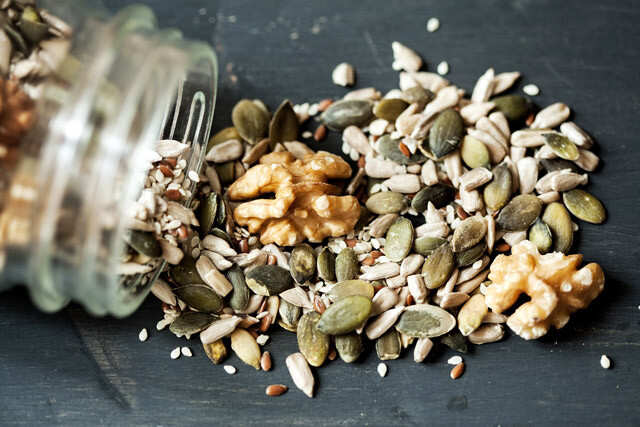
Other than folic acid, nuts and seeds are good sources of protein, healthy fats, fibre, and other vitamins and minerals. About 28 grams of walnuts contains about 28 mcg of folate and 28 grams of flax seeds contains about 24 mcg of folate. Make sure you take a handful of seeds and nuts in your breakfast!
Tip:Eat a mix of sources of essential nutrients to get ample nourishment.
Deficiency Of Source Of Vitamin C And Folic
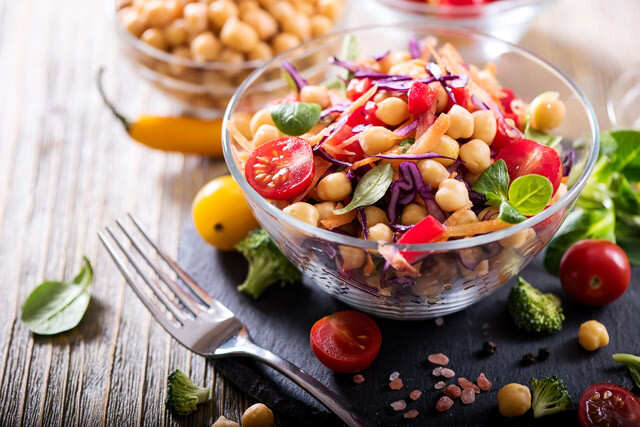
Dr. Desai informs, “Severe vitamin C deficiency can lead to scurvy. Vitamin C deficiency is commonly seen in bottle-fed infants, people taking inadequate diet, alcoholics, in patients with gastrointestinal diseases. Individuals who smoke also develop vitamin C deficiency, as smoking lowers the body’s ability to absorb this nutrient.” She lists fatigue, depression, rash, internal bleeding and impaired wound healing as some symptoms of vitamin C deficiency. In infants and children, a lack of vitamin C may impair growth.
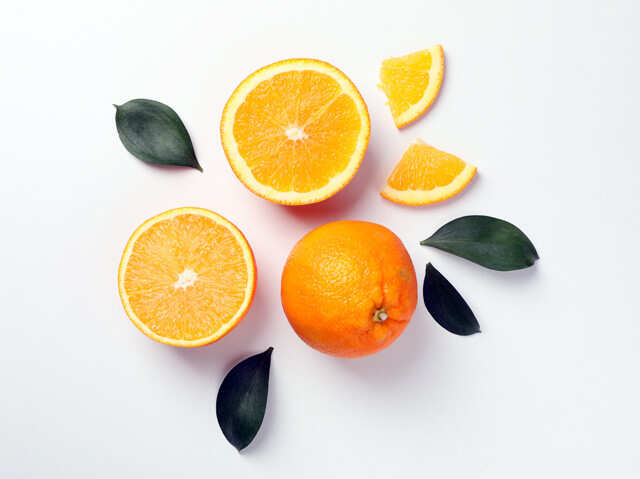
With regards to folic acid, Dr. Desai says, “Deficiency of this nutrient can lead to tiredness (megaloblastic anemia), diffuse hyperpigmentation, spotty pigmentation on palms, chapped lips and inflammation of the tongue. Folate deficiency is most commonly found in pregnant and lactating women. Folate deficiency will not go away on its own and hence treatment is required, involving dietary changes and/or oral supplements.” Shortness of breath, nausea, vomiting, abdominal pain, weight loss, and muscle weakness are some signs and symptoms of folic deficiency.
If you experience any of these symptoms, add a source of vitamin C and folic acid to your diet. This infographic helps you understand the health issues caused by a deficiency of these nutrients.
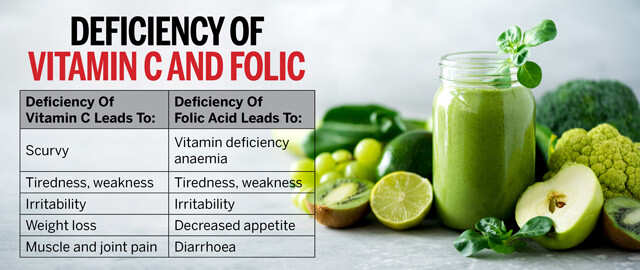
Tip:Eat a healthy balanced diet to avoid vitamin and mineral deficiency.
FAQs:
Q. Should one consider taking supplements instead of natural sources of vitamin C and folic acid?
A. Please take supplements only after consulting your doctor and consume only the advised amount. If you take up to nine servings of fresh fruits and vegetables a day, you don’t need to rely on supplements.
Q. Will intake of too much source of vitamin c and folic acid become harmful?
A. Both vitamin C and folic acid are water-soluble and are not stored in the body. As such, they won’t cause trouble. However, if taken in excess, they may lead to stomach upset, confusion, nausea.
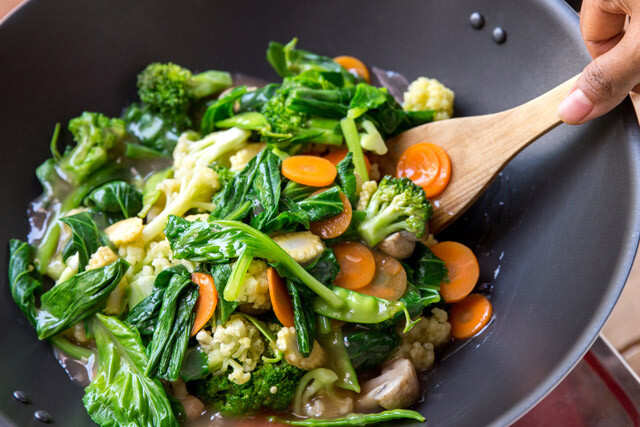
Q. What is the recommended daily amount for vitamin C and folic acid?
A. For adults, recommended daily amount for vitamin C is 65 to 90 mg, while it is 400 mcg for folic acid, folate, or vitamin B9.






